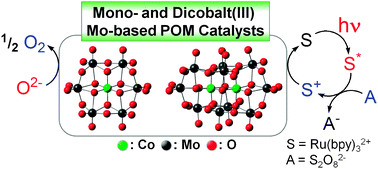Visible light-induced wateroxidation catalyzed by molybdenum-based polyoxometalates with mono- and dicobalt(iii) cores as oxygen-evolving centers†
Abstract
The

* Corresponding authors
a
Department of Chemistry, Faculty of Science, Kyushu University, Hakozaki, Higashi-ku, Fukuoka, Japan
E-mail:
ksakai@chem.kyushu-univ.jp
Fax: +81-92-642-2596
Tel: +81-92-642-2596
b International Research Center for Molecular Systems (IRCMS), Kyushu University, Motooka 744, Nishi-ku, Fukuoka, Japan
The

 Please wait while we load your content...
Something went wrong. Try again?
Please wait while we load your content...
Something went wrong. Try again?
S. Tanaka, M. Annaka and K. Sakai, Chem. Commun., 2012, 48, 1653 DOI: 10.1039/C2CC16821A
To request permission to reproduce material from this article, please go to the Copyright Clearance Center request page.
If you are an author contributing to an RSC publication, you do not need to request permission provided correct acknowledgement is given.
If you are the author of this article, you do not need to request permission to reproduce figures and diagrams provided correct acknowledgement is given. If you want to reproduce the whole article in a third-party publication (excluding your thesis/dissertation for which permission is not required) please go to the Copyright Clearance Center request page.
Read more about how to correctly acknowledge RSC content.
 Fetching data from CrossRef.
Fetching data from CrossRef.
This may take some time to load.
Loading related content
